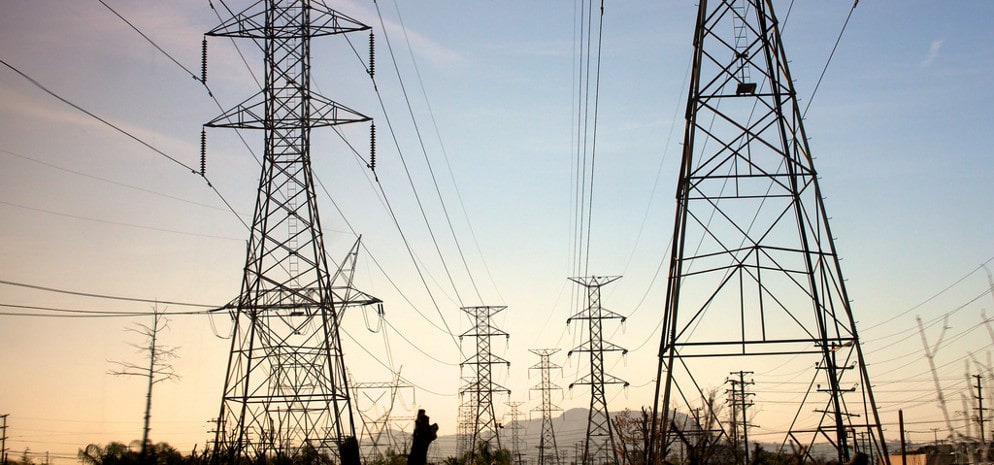 pv magazine: Why does Vote Solar care about “gold plating the grid”? How does that affect solar development?
pv magazine: Why does Vote Solar care about “gold plating the grid”? How does that affect solar development?
Ed Smeloff: It affects it in a couple of ways. One, it raises the cost of operating the grid and displaces the opportunity to use solar, storage, demand response, and other distributed technologies to operate the grid.
Secondly, it’s likely that in some cases these investments will be attributed to increased penetrations of solar on the grid, and then there will be attempts to charge those customers [who have solar] for those increased investments. We are seeing in some states an attempt to separate customers that have distributed generation into a separate rate class and to then charge them different rates and attribute to them certain costs that may or may not be caused by distributed generation.
We were involved, to be specific, in the general rate case for Southern California Edison.
Southern California Edison was proposing, for about 800 circuits—which is about 20% of all their circuits—putting in three mid-point switches and circuit ties that would allow them to shunt power from one circuit to another, and so automatically reconfigure the distribution system in order to protect equipment. We think that was excessive and argued in our testimony that they had not justified that on a cost-benefit ratio.
A lot of what we’re calling gold-plating falls under a category that the utilities might say is grid modernization and we think in many cases, they’re trying to prematurely reconfigure the grid—put in more switches, put in more sensors, without justifying them on a cost-benefit analysis and without thinking about the possibility of using distributed energy resources themselves to make the corrections that are needed to protect the grid. Now, with a very much lower cost of storage and also the higher usage of demand response with smarter appliances and thermostats, it’s possible to avoid these thermal overloads or over-voltages by making the adjustments on the consumer’s premises or within a neighborhood, rather than having brand new switches installed, at a million dollars a switch, and then shunt the power off to an adjacent circuit if there is a possibility of overloads.
pv magazine: So, why would a utility make unnecessary investments? What’s their incentive to do something that’s not best for the customer?
Ed Smeloff: Well, the way the rate-making regulation occurs right now is that utilities are allowed to recover their investments and a regulated rate of return on the investments they make—on their rate base. So there’s just an inherent bias towards overinvestment within the
utility structure for regulation—if they can justify an investment, they get the right to earn a return on that, a regulated return.
So that’s the fundamental reason why you have to have oversight and of course [require] the utilities to do cost-benefit analysis to justify these investments. You know, from an engineering perspective they want to protect the system, to make sure that it operates safely and reliably. And there is the potential that with reverse power flows, you can you can overload a circuit. So, there are legitimate reasons to analyze what’s happening down at the distribution level and take corrective measures. We want those measures to be cost effective and to use the inherent capability of smart inverters and energy storage systems and smart building management systems.
pv magazine: What types of grid modernization investments actually support the growth of solar?
Ed Smeloff: We think the grid management systems that utilities are proposing, sometimes called DERMS, for distributed energy resource management systems, make sense. There are inherent capabilities in smart inverters to make adjustments to voltage or reactive power. When the utility can sense through that inverter-based system that there is a perturbation, they can make adjustments through directly controlling the inverter or providing economic incentives to the customer to make adjustments.
The grid uses capacitors rather than inverters to control the voltage and reactive power. So there are a lot of capacitors that are at substations and on circuits and those are, to a certain degree automated, and the utility controls those devices to manage the voltage on the system.
Inverters [that are part of solar or storage systems] can provide the same functionality as capacitors, and over time can reduce the need for the utility to install more capacitors—and save money that way.
pv magazine: Can you name a few states were Vote Solar is most concerned about actual or potential gold plating of the grid?
Ed Smeloff: We think California is sort of the leader. They’ve developed a grid modernization protocol and are now requiring the utilities to lay out by distinct categories the investments they’re making. PG&E will be the first test case and that’s coming up in a matter of weeks, or maybe a month, when they submit their application for a general rate case, for a rate increase. And they’re going to propose grid modernization in that. PG&E we think will be an important test case.
We know that Michigan and Minnesota have been looking at distribution resource planning and distribution system planning, and are developing protocols and methods for determining the cost effectiveness, and promoting the use, of distributed energy resources. So there are utilities that have sort of embraced this, recognized that solar and storage are technologies of the future and are working to make them operate smartly, and safely.
We’ve seen some of the East Coast utilities—Duke and Dominion—also look at grid modernization. Sometimes grid modernization gets conflated with what we would call grid hardening. Here in California, we need to harden the grid to protect against wildfires, which means things like using insulated rather than uninsulated wires, steel poles rather than wood poles, and undergrounding. All of that is costly, and it’s not really modernization, it’s protecting from climatic conditions—wildfires, hurricanes, et cetera.
Grid modernization, we more narrowly define that as making the grid operate more agilely, allowing for two-way power flows, allowing for what is sometimes called self-healing, which just means that you install cost-effective sensors that detect faults and automatically switch power to an adjacent line so that it avoids damaging equipment.
pv magazine: Are there any victories that Vote Solar has seen—whether Vote Solar was a part of it or not—with regard to a gold-plating-the-grid request by a utility that the regulators turned down?
Ed Smeloff: We’ll see very soon with Southern California Edison. We put in pretty detailed testimony in the case that initiated in 2016 and is about to come to a conclusion. We think we’re going to be successful in getting out of the rate base a certain number of investments in unnecessary switches and replacing protective relays, but we haven’t seen the final results yet, so stay tuned in the next month or two and we should be able to tell you that.
Hawaiian Electric kind of stumbled through this process where they cut off interconnection requests for a period of time as they developed a better understanding of hosting capacity on the lines. And the solar community helped Hawaiian Electric kind of get through this process of grid modernization. So while it wasn’t so much Vote Solar, there was kind of a concerted effort of the solar community to straighten things out in Hawaii.
And I think the next case you’re going to see into is Southern California Edison.
pv magazine: How does gold plating the grid compare to excess fossil infrastructure investment as a risk to solar deployment?
Ed Smeloff: [Those] excessive investments may impact solar less than they impact storage or demand response, or complementary technologies. Utilities are now saying solar is good, but it can create problems, and in order to avoid those problems, we need to make a certain amount of investment. It is those investments that could crowd out the need for, or the usefulness of, energy storage and demand response programs, and drive up overall costs for all ratepayers, and prevent ratepayers who are willing to install those technologies from having an opportunity to earn revenues on them.
Thank you for your good thoughts and insights. Is there anything we missed that you would like to touch on?
Ed Smeloff: No, I think we’ve covered the waterfront. I appreciate the questions.
Interview conducted by William Driscoll for pv magazine USA.
This content is protected by copyright and may not be reused. If you want to cooperate with us and would like to reuse some of our content, please contact: editors@pv-magazine.com.








By submitting this form you agree to pv magazine using your data for the purposes of publishing your comment.
Your personal data will only be disclosed or otherwise transmitted to third parties for the purposes of spam filtering or if this is necessary for technical maintenance of the website. Any other transfer to third parties will not take place unless this is justified on the basis of applicable data protection regulations or if pv magazine is legally obliged to do so.
You may revoke this consent at any time with effect for the future, in which case your personal data will be deleted immediately. Otherwise, your data will be deleted if pv magazine has processed your request or the purpose of data storage is fulfilled.
Further information on data privacy can be found in our Data Protection Policy.